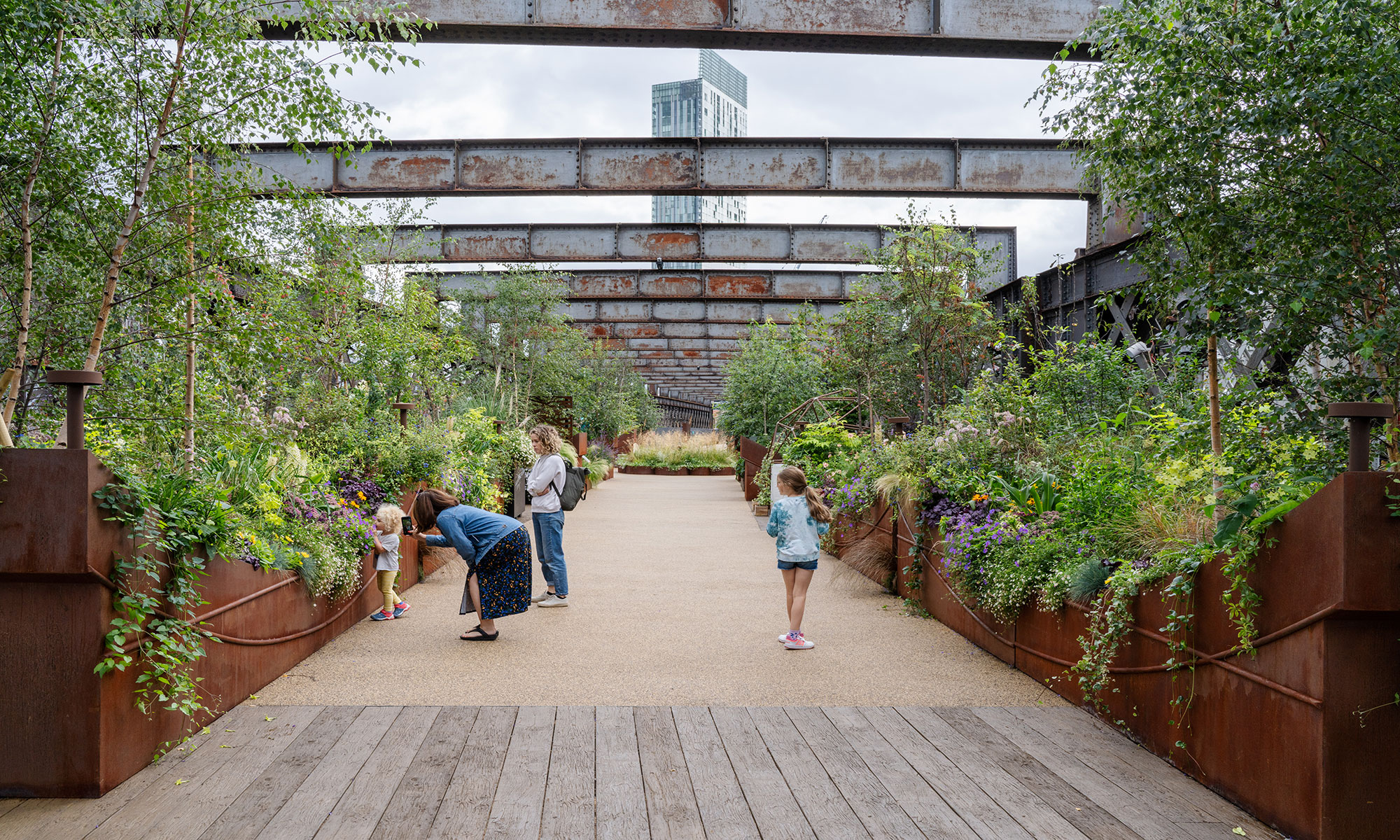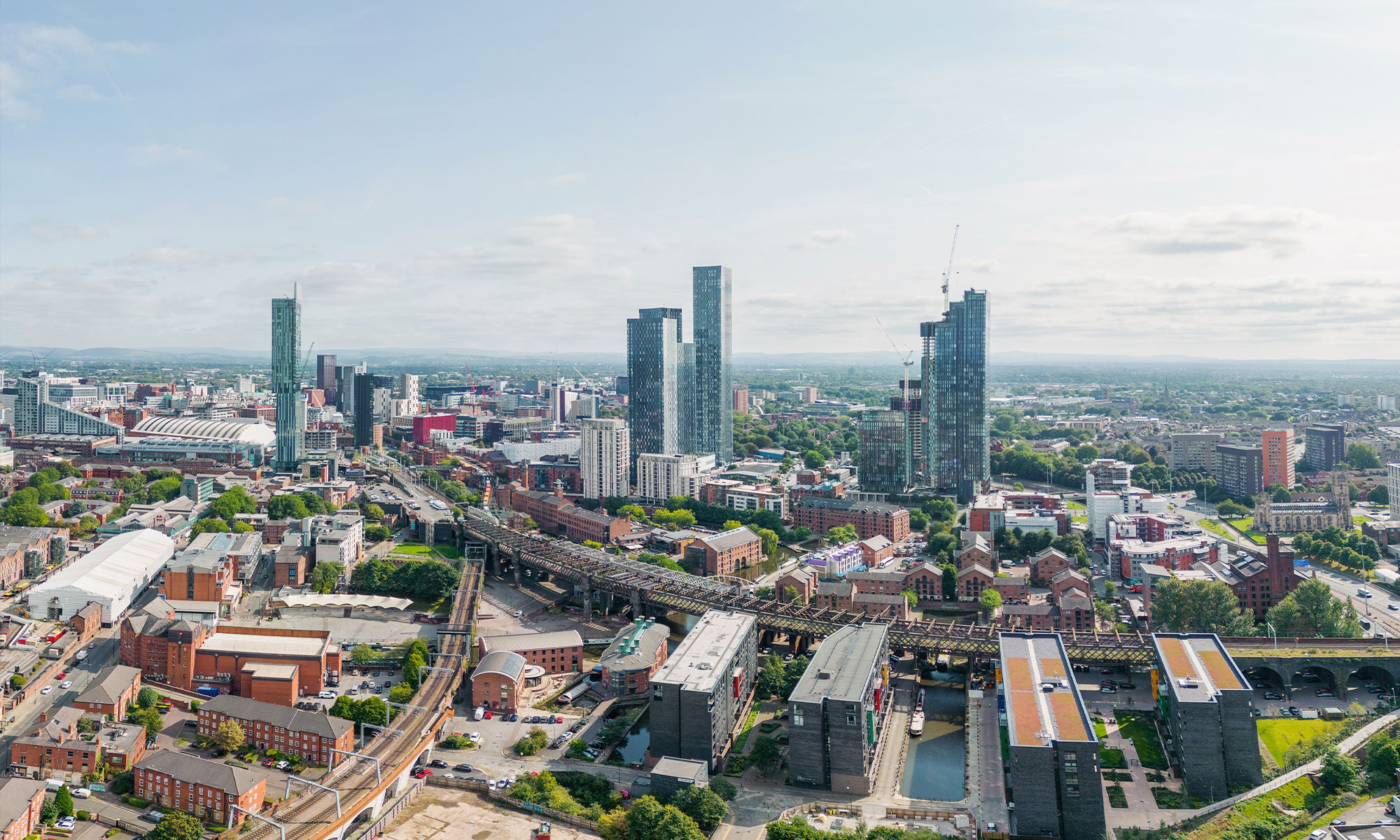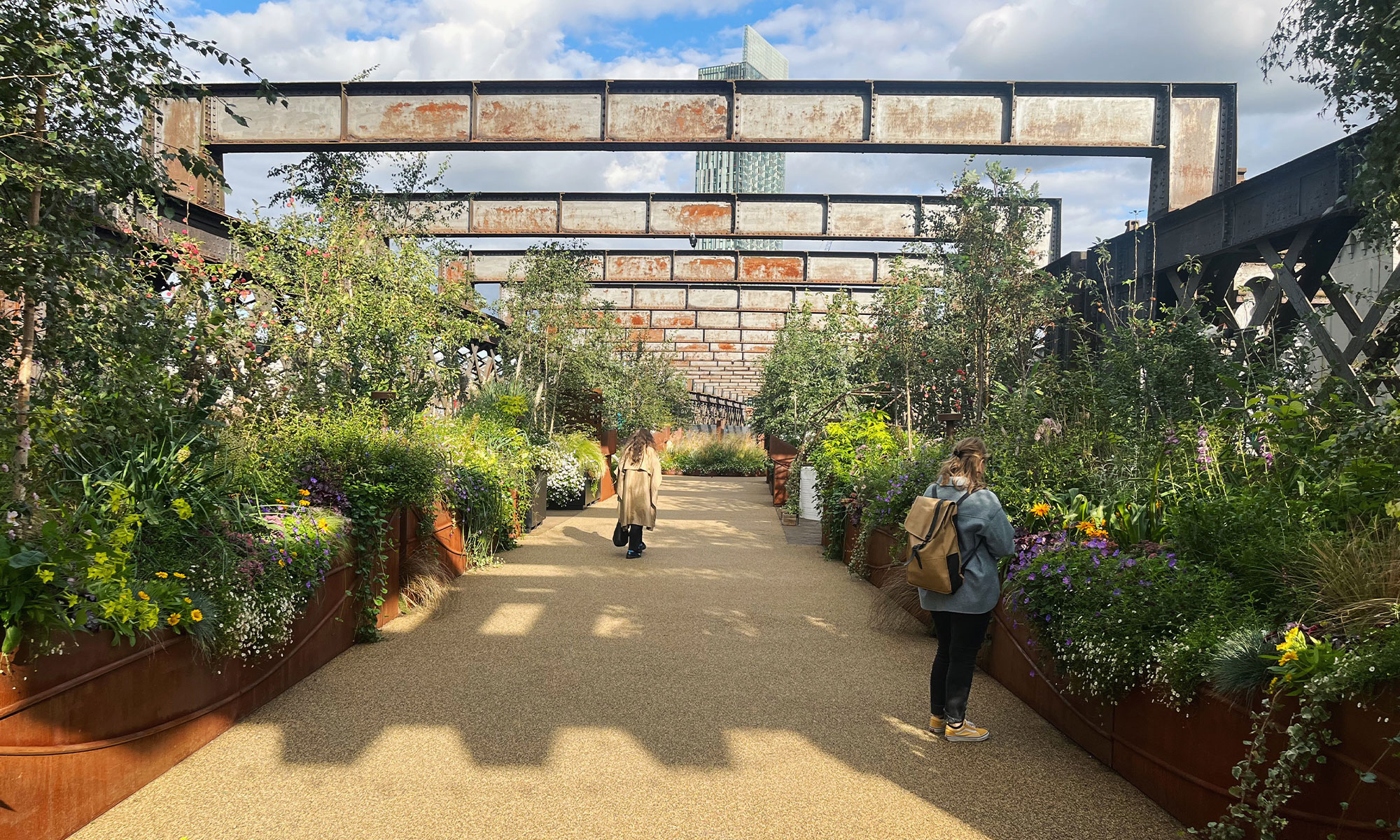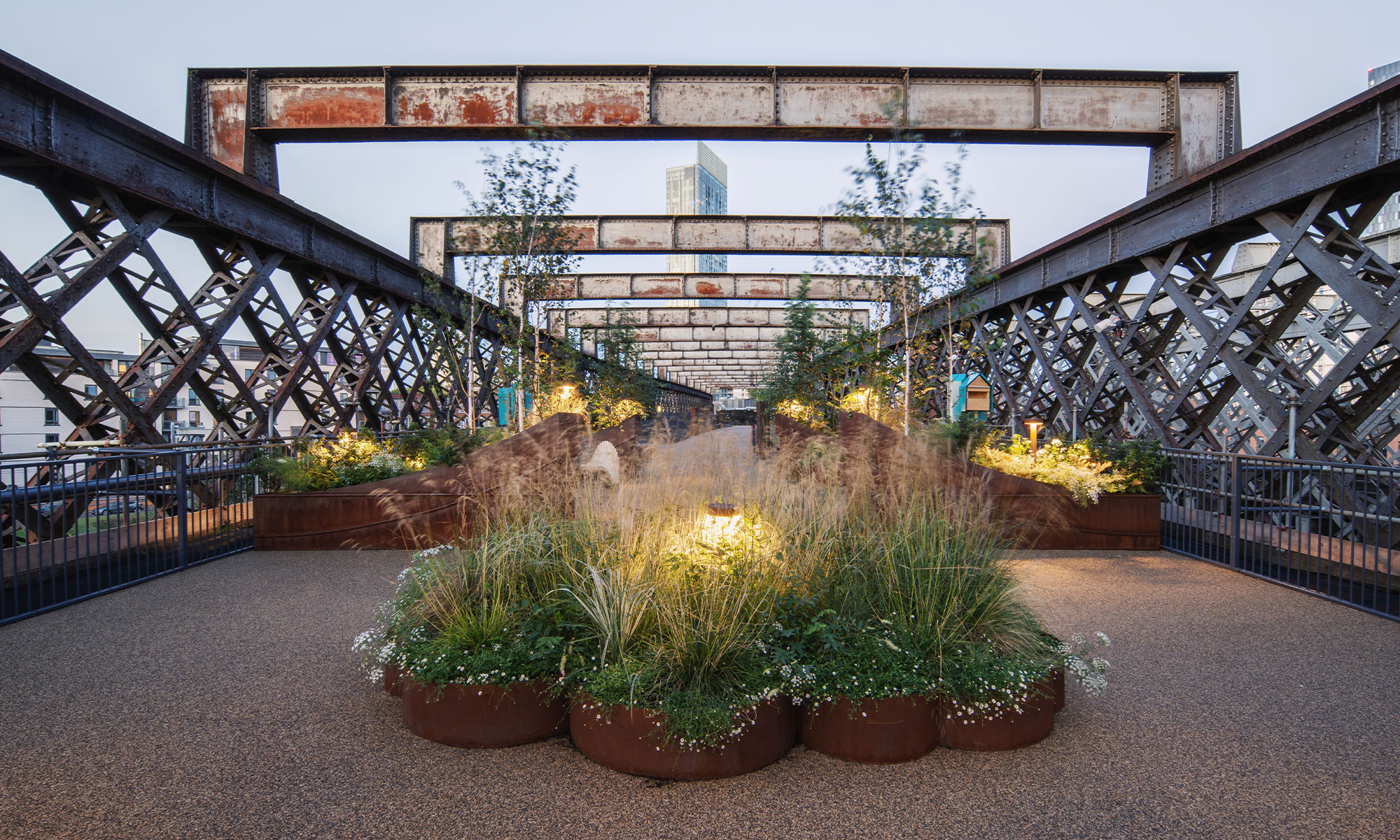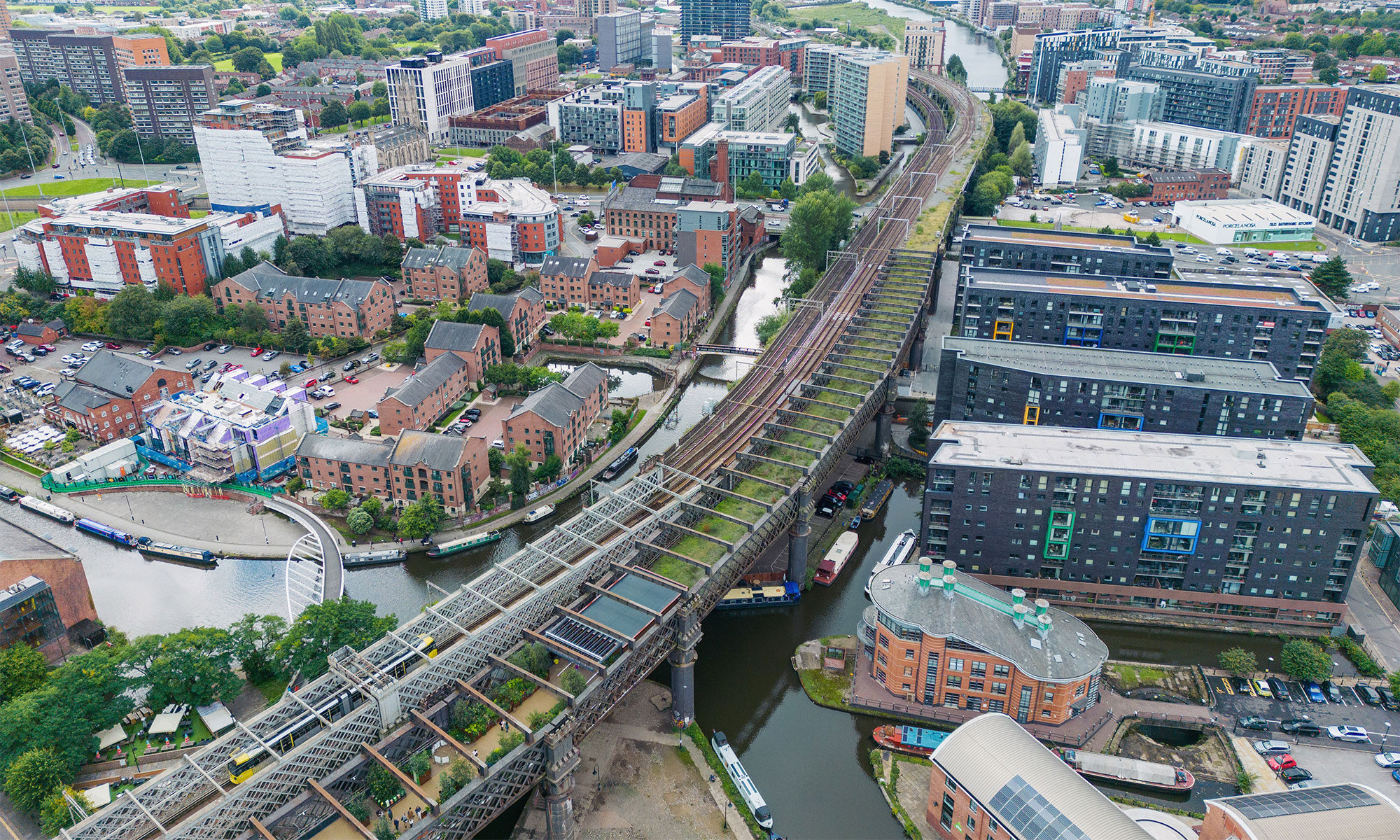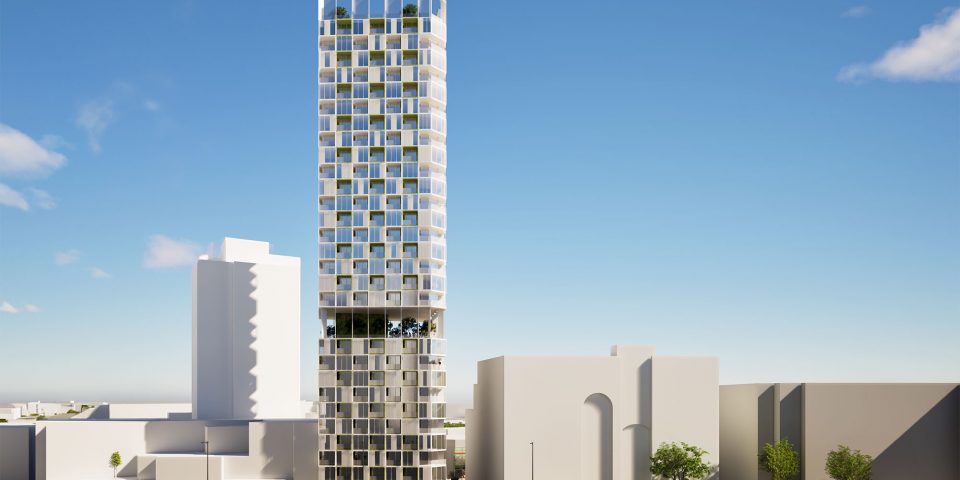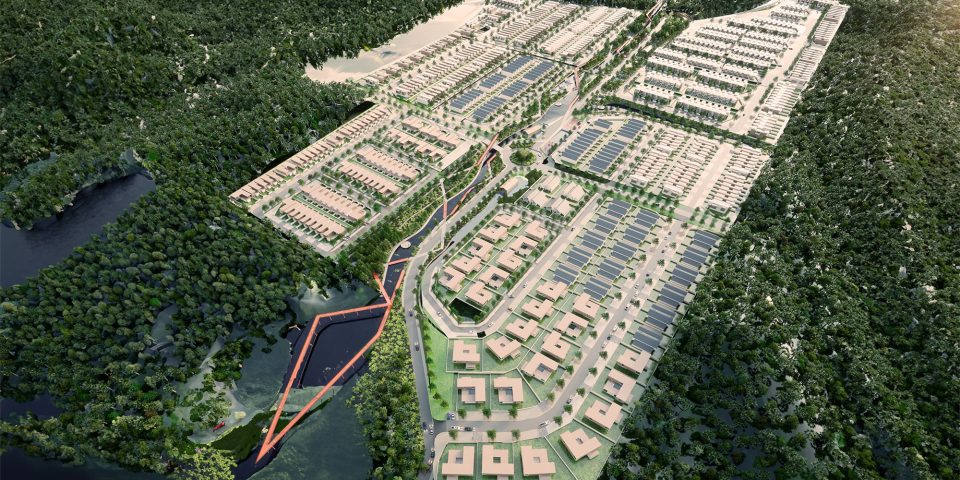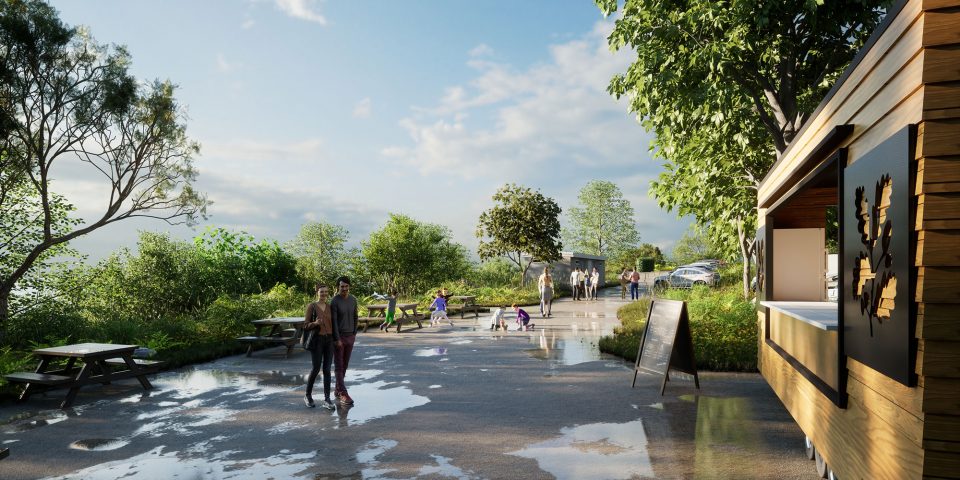Castlefield Viaduct
| Location: | Manchester |
| Area: | 4,950sqm |
| Client: | National Trust |
| Service: | Lead Consultant, Architecture, Masterplanning, CGI, Stakeholder Engagement |
| Status: | Completed |
In collaboration with the National Trust and the wider community, we restored and reimagined the Grade II listed Castlefield Viaduct as a vibrant, free-to-access urban park. Originally built in 1882 to transport goods in and out of the city, the Viaduct remained in use until 1969, after which it stood dormant for decades. Marrying proud industrial heritage with a modern urban park concept, the transformation reclaims the Viaduct’s place in the city, celebrating its part in Manchester’s past, present and future.
A long-held aspiration of the local community, Castlefield Viaduct has been brought back to life as a shared, accessible space that invites people to connect with nature, heritage, and each other. The overwhelmingly positive public response has shaped the project’s evolution, informing the vision for its next phase: the permanent regeneration of the Viaduct.
As the birthplace of the industrial revolution, Manchester is enriched by its heritage assets. By repurposing the Viaduct, the project breathes new life into an architectural landmark, introducing vital urban greening to the city centre and increasing access to outdoor spaces – ensuring this piece of Manchester’s past plays a meaningful role in its future.
The project is unique in its focus on past, present and future, inviting visitors on a journey through three curated zones. The experience begins at the welcome area, where a living green wall opens to reveal the Viaduct in its raw, existing form. Stark and imposing, this untouched section highlights the industrial character of the structure, encouraging visitors to imagine its potential future.
From here, the Viaduct transitions into the ‘secret garden’, a dynamic space where freestanding modular planters – crafted from red Corten steel to echo Manchester’s iconic brickwork – bring life to the structure. Inspired by the Viaduct’s railway heritage, the rhythmic placement of the planters reflects the movement of passing trains, creating a sense of motion. Thoughtfully spaced gaps frame long-distance views of the city, offering a new perspective on the surroundings.
This area also hosts community-led initiatives, including a growing space and ‘Partner Plots,’ dedicated areas where local organisations showcase their work through exhibitions, art installations, and performances. Finally, an indoor events space, enveloped in greenery, provides a glimpse into the untouched west end of the Viaduct – a window into the past.
The project is shaped by the community, with volunteers playing a central role in its activation and evolution. From educational workshops and gardening sessions to art installations and performances, the Viaduct is a dynamic platform for local initiatives and cultural expression. As the Viaduct enters its next phase of development, its future will continue to be shaped by the people of Manchester, ensuring this iconic structure remains a place for connection, discovery, and regeneration.
For the 50,000 residents living within walking distance, many from underrepresented communities, the park provides a much-needed green space. The pilot scheme directly addresses urban inequalities in access to nature, a need highlighted by the pandemic, by promoting health and wellbeing, biodiversity, and active travel. By connecting with Manchester’s wider initiatives, the Viaduct also introduces a new walking route, encouraging more sustainable ways to move through the city.
The park, maintained by National Trust gardeners and volunteers, offers visitors a chance to engage with nature and learn about sustainable gardening. New ecological habitats have emerged, with bird species such as house sparrows and sparrowhawks now making the Viaduct their home.
Designed with sustainability at its core, the project is a testament to the National Trust’s commitment to preserving both nature and heritage. The project minimises waste and carbon emissions, achieving an outstanding embodied carbon score. Over 80% of materials were sourced sustainably and designed for reuse, with minimal construction required on-site. Where possible, waste was recycled, and energy-efficient solutions such as LED lighting and rainwater harvesting were incorporated. To further reduce environmental impact, the Viaduct is accessible by foot, bicycle, or public transport, supporting low-carbon travel. By breathing new life into this historic structure, the project not only preserves Manchester’s industrial heritage but also reclaims thousands of tonnes of embodied carbon from the 19th century, ensuring a lasting environmental legacy.
| Client | National Trust |
| Architect | Twelve Architects |
| Structural, Civil & MEP Engineer | Arup |
| Planting Design | National Trust |
| Transport Consultant | Vectos |
| Project Manager & Quantity Surveyor | Stace |
| Contamination & Drainage | Royal Haskoning DHV |
| Ecology | Urban Green |
| Building Control | SWECO |
| Heritage Consultant | Purcell |
| Main Contractor | MC Construction |
| Graphic Design & Interpretation | Creative Concern, Stuco & O Street |
| Photographer | David Bewick |
